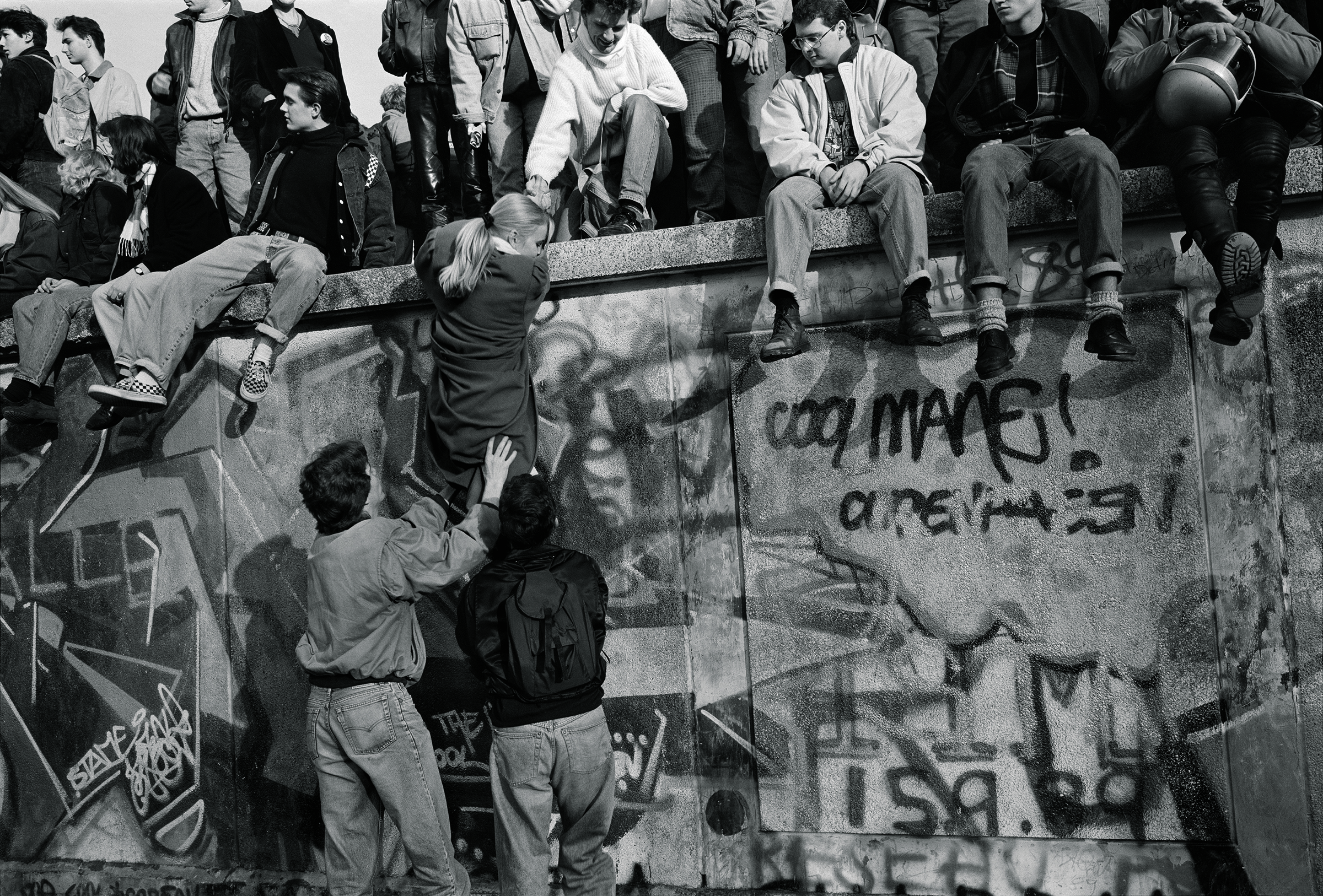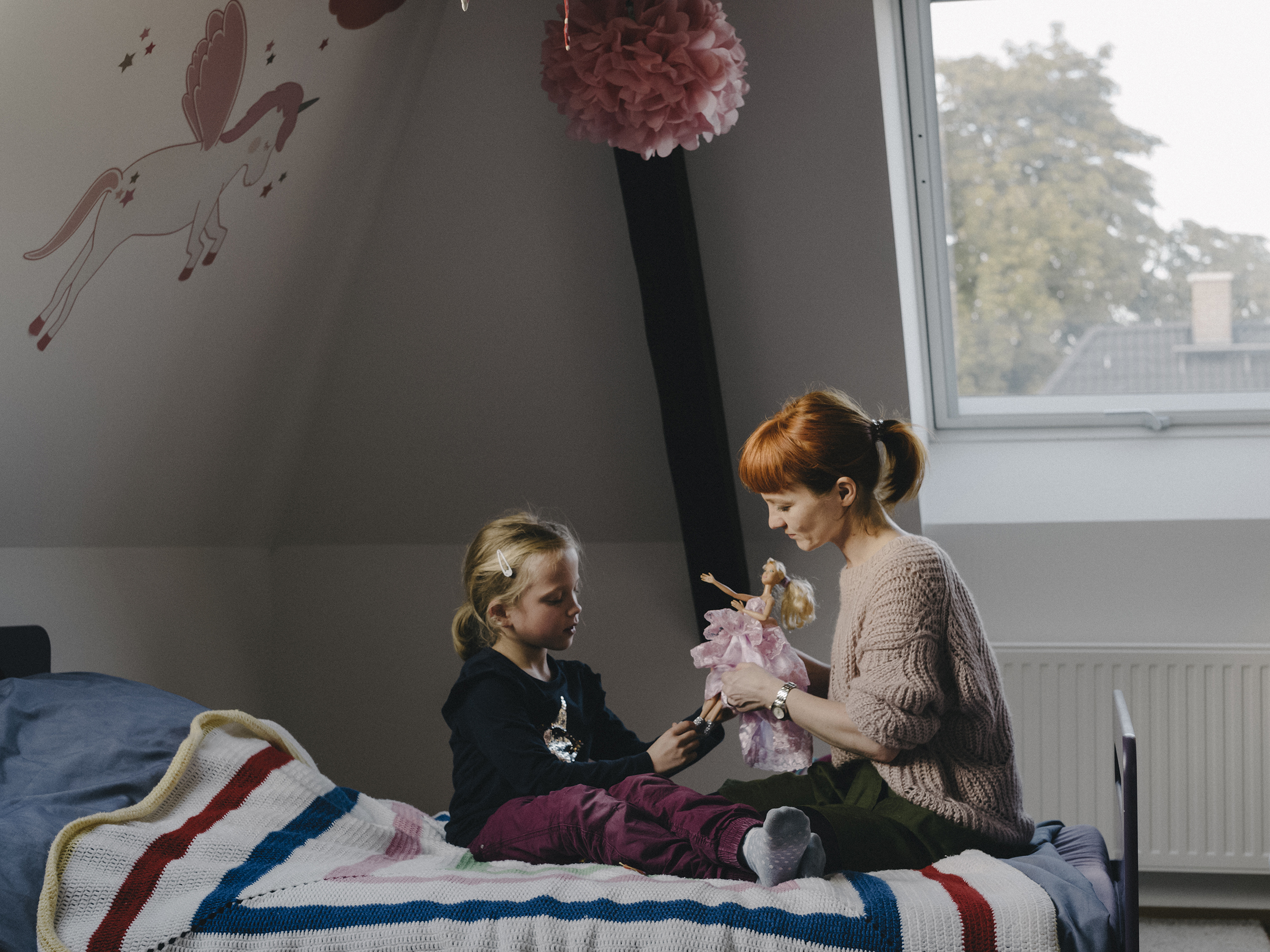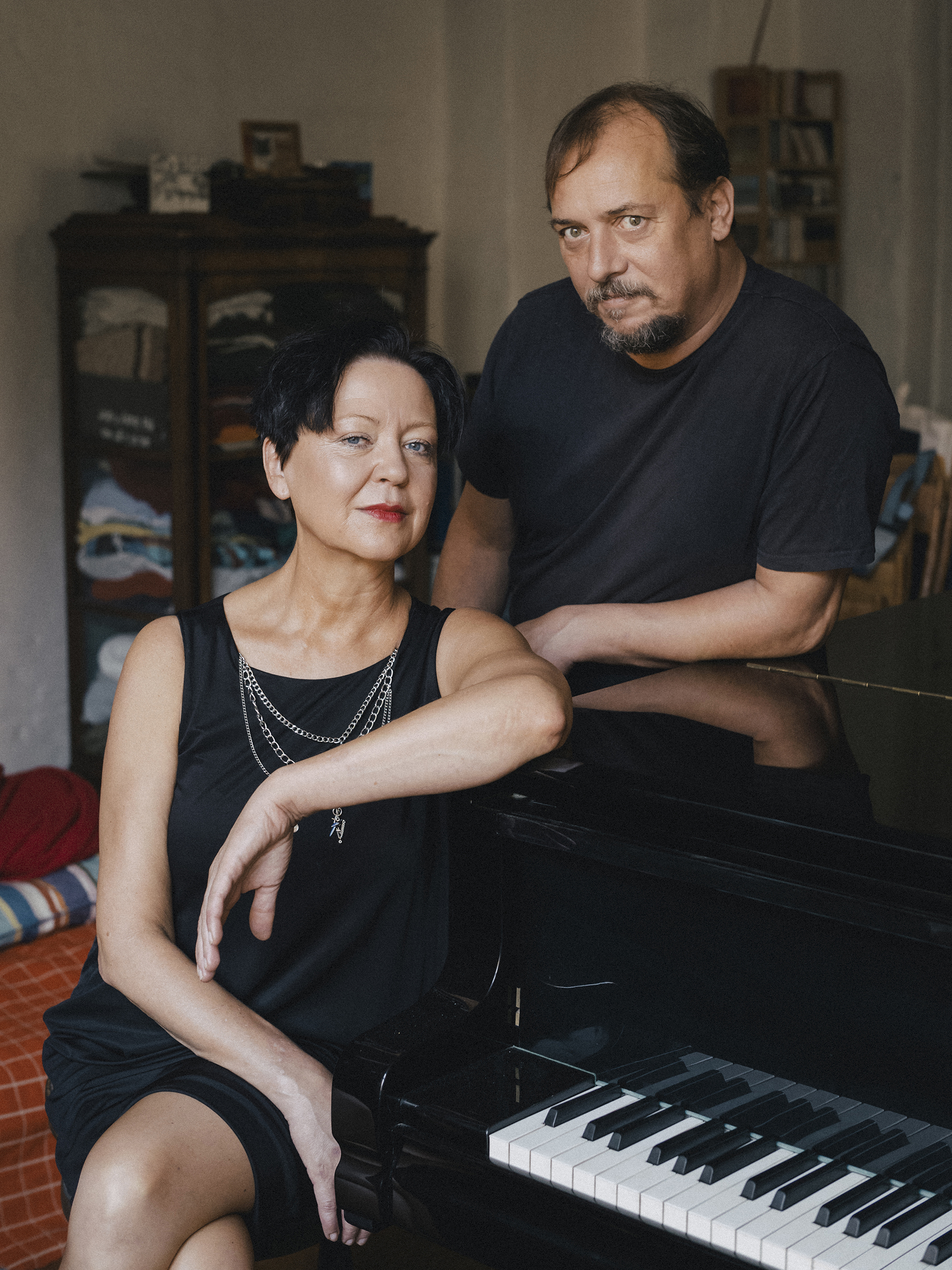
Peter Keup can still remember how it felt to hold deutsche marks in his hand.
“It was special to even touch this money,” he recalls. “It felt solid. The East German mark was thinner, flimsier.” As a boy growing up in East Germany, he was sometimes sent West German currency by his grandparents on the other side of the border, be it as a birthday gift or a reward for good school grades. Keup pored obsessively over the notes, minted with the mysterious–sounding titles and images of unknown cities and historical figures. “Names from behind the Iron Curtain, an invisible world,” he reflects. Their worth to him was far more than simply financial.
In any case, there was only so much the 16 million citizens of the communist German Democratic Republic (G.D.R.) could buy in a sealed-off country of scarcity, shortages and joyless austerity. Tantalizing tastes of Western consumer goods could be obtained on the black market and at state-run “Intershops,” which only accepted hard currency, like dollars or deutsche marks. Cigarettes, coffee, chocolate and pop records were on offer to those who could afford them. Others had to find their pleasures where they could. “I loved the smell of Persil and Ariel detergent in the clothes,” reminisces Nicole Hartmann, of receiving packages of hand-me-downs from relatives in the West as a young girl. “I always wanted to keep them unwashed.”
When the Berlin Wall fell in November 1989, followed by the inner German border that ran from Czechoslovakia to the Baltic Sea, the gates to the West were opened to all, and the bounties and temptations that lay beyond. By foot and by row upon row of Trabant and Wartburg cars, the “Ossis” (as East Germans were known) began to pour across what had been one of the most secure borders in the world. Were that not all reason enough to feel euphoric, there was more awaiting them on the other side: free money.

Since 1970, East Germans arriving to the Federal Republic of Germany by whatever means were paid a grant, initially of 30 deutsche marks (DM) twice a year, later rising to 100 DM once a year, under a program known as Begrüßungsgeld or “welcome money.” Under Chancellor Willy Brandt’s Ostpolitik policy of peaceful rapprochement, the measure was intended to help the few people who did manage to depart the G.D.R., legally or otherwise, to pay for food or travel. The amount is equivalent to about $100 in today’s money.
After the abrupt and entirely unforeseen rupture of the Berlin Wall, demand for welcome money surged—and the West German authorities stuck to their promise. As word spread like wildfire among arriving Ossis, long queues began to form outside banks and building societies. The state-sanctioned handout triggered a colossal spending spree across Berlin’s River Spree. It was a commercial revolution, and a moment of mass transactional transference from socialism into capitalism and the material world. Considered a gift by some and a bribe by others, it helped set the tone for full and swift reunification by October 1990, firmly on West German terms.
No official statistics exist as to exactly how much was claimed in all, but by the time payments were halted on Dec. 29, 1989, replaced by a foreign currency fund that both German states contributed to, it’s estimated that at least 4 billion DM had been paid out in a matter of just seven weeks. “I think over 95% [of East Germans] got this money,” speculates Sören Marotz, historian at the DDR Museum of East Germany’s history. “Some people found ways to claim the money more than once.”
On West Berlin’s glittering technicolor shopping boulevard, the Kurfürstendamm, the famous KaDeWe department store was a first port of call for many—to spend or simply to stare in awe at its luxurious abundance. In supermarkets in the borderlands of West Germany, witnesses remember seeing shelves stripped bare. Almost everyone claimed their 100 DM, from the current Chancellor Angela Merkel, then a 35-year-old physicist living in East Berlin, to sports stars, doctors, artists, political dissidents, musicians, families, pensioners and Stasi agents. Even babies were eligible for a payout.
Cash injections to the former G.D.R. have in some ways never ceased. Since 1991, Germans have paid a so-called solidarity surcharge, a fee on income, capital gains and corporate taxes currently set at 5.5%, in order to help the former communist east. Yet despite receiving €243 billion in “Soli” taxes since 1995, the economy in the country’s East continues to lag far behind the West’s. Unemployment is higher, wages are lower, and the population of the former G.D.R.’s territory has dropped to its lowest level in 114 years. It has given rise among some to what is known as “Ostalgia,” a longing for the simplicity and cradle-to-grave comforts of life in the G.D.R. Political disaffection has seen parts of the former East become a heartland for populist parties; in the eastern state of Thuringia on Oct. 27, the far-right anti–migrant Alternative for Germany party finished ahead of Merkel’s -center-right party in local elections.
What East Germans decided to buy when the Wall fell says a lot about that moment in our history, 30 years ago—about the true value of money, about competing economic systems, and about the hopes, freedoms and tensions of reunifying a country. Each purchase tells its own story. Here are 10 of them:
The All-American Doll

“There was a long row of cars in the middle of the night,” Susan Penquitt remembers vividly, despite being just 8 years old when her family drove across the border into West Germany for the first time. The road led to the city of Fulda in Hesse, about 65 miles east of Frankfurt, and the toy section of a department store, a sight the little girl had barely dreamed of. “When I saw the Barbie on the shelf, you know, that was it. I don’t remember any other toy in that shop.”Lovingly looked after for three decades, the iconic American doll today belongs to Penquitt’s eldest daughter Nora, 8, in their home outside of Leipzig. It’s a happy token of what was not always a happy time. Like millions of East Germans working in largely state-owned industries, both of Penquitt’s parents lost their jobs following reunification. “They never had so many sorrows really,” she says.
A Grand Scheme for a Piano

The bohemian East Berlin performance artists Else Gabriel and Ulf Wrede celebrated their first days and nights in the West like many Germans did: together in a beer-soaked haze. “We gave pieces of the Wall to people in bars and they gave us drinks,” 57-year-old Gabriel recalls. “Everyone was so out of control. It felt like you could do anything, there was two systems just collapsing into each other.” By ripping out pages from their passports to remove collection stamps, they say they claimed their Begrüßungsgeld multiple times between them. “I spent 27 years of my life in f-cking East Germany,” Gabriel says. “There was no guilt about [taking] a few hundred deutsche marks.”
Gabriel had been permitted to leave the G.D.R. just days before the Wall fell, and had earned some deutsche marks there already. The couple combined their funds left over after the revelries and changed it all back to Eastern currency, taking advantage of a black market exchange rate to convert around 2,000 DM into around 10,000 Eastern marks. After smuggling it back into East Germany in Wrede’s socks (“It stank when we pulled the money out,” Gabriel laughs), the pair used their haul to pay off a loan on a Bösendorfer grand piano. In his Neukölln studio apartment today, Wrede, 51, still plays the dusty black keyboard, now worth many times the price he paid for it 30 years ago. “Best deal ever,” Gabriel grins proudly.
Black Adidas, White Stripes
At the time the Wall fell, Andreas Thom was already living a privileged life. At 24, he had played 51 matches for the East German national soccer team, and won the G.D.R. Premier League five times with Dynamo Berlin. Surely Thom had no need for his Begrüßungsgeld? “Of course I got the money,” he says. “Everybody got the money!” On a shopping trip to the KaDeWe, he purchased a pair of soccer shoes: “Adidas Samba Spezial, black with white stripes.” Just 37 days after reunification, Thom made history as the first East German player to sign for a West German club, when he moved to Bayern Leverkusen for a fee of 2.5 million DM. He thinks back to his debut game in February 1990 vs. FC Homburg. “Everybody was watching [as if] I had four arms, two heads, four legs,” he says. “But I scored, and everything was O.K.”
An Exotic Feast of Rare Foods
A dissident photographer, Harald Hauswald’s evocative black-and-white street scenes from behind the Wall were published in West German magazines as well as in a controversial book, making him a person of interest to the hated state security police. Hauswald escaped serious imprisonment only because of his connections to influential Western journalists, who would help him smuggle his film reels out. Shooting sometimes literally from the hip, he wielded his camera like a weapon. “I felt so trapped by the Wall,” says the 65-year-old. “Taking photographs was the work I did to fight against that feeling.” Hauswald and his friends bought a victory feast of foods unavailable in the East with their welcome money. “Kiwi and radicchio, that kind of stuff,” he says. “Today I know my way around exotic fruits better than many Westerners. And I still love to cook.”
A Pen Unlike All the Others

Jens Müller, a.k.a. graffiti artist Tasso, owns many black Edding 850 marker pens today, but he is pretty sure that jumbled somewhere among them in his warehouse studio in Meerane is the one that changed his life. “For me it was the first time I had seen graffiti tags, on every corner in every place,” he says, of driving with friends around Kreuzberg in West Berlin as a 23-year-old. “I was wondering, ‘How have they done this?’ And then I see it must be a pen, a marker, and so I said, ‘I want to have this marker.’” He found one in a Karstadt department store that cost 10 of his 100 DM. “That was a lot. My friends thought I was crazy.” He worked in construction following reunification, eventually becoming a freelance artist. Today his tag is recognized around the world. He has visited 32 different countries to make, exhibit and promote his work.
Reading Material for the Runway
On a gray day in November 1988, 23-year-old fashion model and designer Grit Seymour was given four hours to leave the G.D.R. Her exit-visa application had been unexpectedly approved. “I had to speed pack,” she says. “My mother walked me to say goodbye. Of course we shed a lot of tears.” She stepped penniless into West Berlin, but remembers feeling instantly liberated. “It was like this huge block of concrete had fallen off my body.” With her Begrüßungsgeld she bought a copy of fashion magazine Vogue Italia, a window into a glamorous new world. On the night the Wall fell, Seymour was already modeling for Gianni Versace in Milan. She returned as fast as she could to Berlin to be reunited with family and friends. “It was like a dream coming true,” she says.
A Bouquet of Flowers for Grandma
“It set me free,” says Peter Keup, of how ballroom dancing made him feel while growing up in Dresden. He excelled at it competitively in partnership with his sister Uta, and in 1981 they were offered the chance to represent the G.D.R. internationally—but only if their family first withdrew a long-standing exit-visa application. They refused. “That’s when I took the decision to escape,” he says. In 1981, aged just 19, Keup set out for Czechoslovakia with a plan to swim across the River Danube from Hungary into Austria. He had 80 DM from his grandparents hidden in the seam of his jeans, which he hoped would pay his way to freedom. Instead he was caught on a train to Bratislava, arrested for currency smuggling and returned to the G.D.R. After a confession extracted under brutal interrogation, he was jailed by the Stasi for 10 months, spending long periods in solitary confinement. Keup’s grandparents’ lawyer helped convince the West German government to pay a $55,000 ransom, and suddenly he really was free. “For the first time it made me feel like an independent human being,” he says, of receiving his Begrüßungsgeld. The yellows and violets of the bouquet of freesia flowers he bought for his grandmother Anna remain bright in his mind. Keup boarded a train for the West German city of Essen and a new life. Years later, the Wall fell, and he and his sister danced together again.
Nothing: “I Was Not a Beggar”
Bernd Roth, a former major in the feared Stasi, is adamant he never claimed his Begrüßungsgeld. “I was not a beggar,” he says. Today Roth, 68, rejects the system that he served, yet is unapologetic about his own actions, which led to the known arrests of 14 people, including a CIA spy. “Why should we be pressured to have a bad [conscience]?” he asks. “We didn’t build concentration camps.” His love of music helped him preserve his individuality, he says. He thought nothing of singing along to “Born in the U.S.A.” at a Bruce Springsteen concert in East Berlin in 1988. “It was just music!” he laughs. Roth still lives in the same town in Thuringia where he grew up. The West has never held any appeal for him, he says. “I found it overwhelming and oppressive. I think oversaturated consumption is harmful.” Was there really nothing that he wanted there? “I might have bought myself some Grundig speakers,” he admits. “That was really just about being able to enjoy a better sound.”
Legos, a Radio and a Trip
Cornelia Guenther first entered the West at Berlin’s Checkpoint Charlie, the infamous Cold War crossing point. Then 29, and a single mother working as a translator, she gingerly stepped across the border in late-November 1989. “I looked at my foot,” she says, as she crossed the military checkpoint that she had overlooked every day from her office window. “I thought, ‘Now I’m walking on West Berlin soil; how amazing is this?’” Having collected their 200 DM, she and her son Christian, 6, bought carefully selected spoils at the KaDeWe: a backpack, some Legos, a radio for the kitchen. The rest of the cash they put toward a trip to England a few months later. “Buying experience was much more important to me than material things,” says Guenther.
A Computer, and a Future
When the Wall fell, Gordon van Godin was a 19-year-old newly discharged from national service in the East German army. He put his welcome money toward an Amiga computer so he could play Tetris and Formula 1 games. Today, he is director of Berlin’s DDR Museum of East German history, and qualified to bust some popular myths about Begrüßungsgeld. Is it true, for instance, that many people bought… bananas? “This is really a cliché, 100%,” he replies. “Because bananas we knew. We didn’t know, for example, kiwi fruit.” He believes the money helped establish a lasting hierarchy between West and East in a reunited Germany that still endures today. “I learned in school that in capitalism, nothing is for free,” Von Godin says. “You have to pay for everything sooner or later.”
More Must-Reads from TIME
- Cybersecurity Experts Are Sounding the Alarm on DOGE
- Meet the 2025 Women of the Year
- The Harsh Truth About Disability Inclusion
- Why Do More Young Adults Have Cancer?
- Colman Domingo Leads With Radical Love
- How to Get Better at Doing Things Alone
- Michelle Zauner Stares Down the Darkness
Contact us at letters@time.com